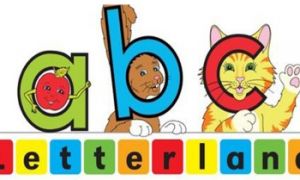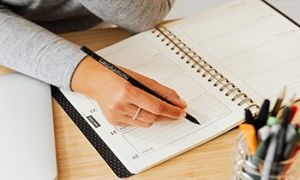When observing children, it's important that we use a range of different observation methods from running records, learning stories to photographs and work samples. Using a variety of different observation methods can assist you in observing a child's interest, skills, abilities, and needs. It provides a foundation for a child's individual assessment and planning. Collecting a series of observations before interpreting and planning will provide a well rounded and holistic picture of the child.
Here are some different types of observation methods that can be used to observe a child:
Anecdotal Records
This observation is usually recorded after the event has occurred and written in past tense. It should focus on what is significant and recorded in sequential order to focus on important details. It may focus on a single area of development or cover a number of developmental areas at once. When observing using an anecdotal method, record what the child had said and done, body language, direct quotes, body language, facial expressions and tone of voice.
Anecdotal records are a useful method for recording significant events or actions that tells us something about the child's development, interests, skills, abilities and needs. Such as observing a child climbing on the playground equipment will provide information on their gross motor development or observing a child crying during drop offs will tell you about the child's social/emotional development.
Example:
Christopher played with the drama materials for 15 minutes, using the dress-ups and examining himself in the mirror. He walked over to the home corner table and said to another boy, 'Hey give me that.' He took the spoon from the other student. I spoke to Christopher and asked him to give the spoon back to the other student. He gave the spoon back and said, 'I like choc milk and a biscuit too!' I asked the children to pack away. Another adult approached Christopher asking him to help pack away. Christopher replied to the adult, 'And then can we go outside?' The adult replied 'Yes!' Christopher shouted 'Yay' and started packing away.
For more information: Anecdotal Records
Running Records
A running record tells a story of the child's behaviour by detailing everything a child says during a set period of time. They are written in present tense since you are recording as it happens. Running records provide a more detailed account of a child's behaviour in particular situations. They are useful in determining why a child is behaving in a particular way and usually provide in depth information on a range of developmental areas. With running records it is often a good ideas to record during a specific time (2 to 5 minutes) or observe during time increments.
Example:
10:15am to 10:20am - Annette kneels down next to Maya and begins wiping her face with a wet cloth. As Annette starts to wipe Maya’s right hand, Maya grabs the cloth with her left hand and yanks it away from Annette. Annette asks, “You wanna do it?” Maya starts wiping her mouth and tongue, clutching the cloth tightly in both hands. Annette smiles, claps her hands together and exclaims, “OK! Good job!” Annette reaches out and begins to lift Maya’s bib over her head. Maya transfers the wet cloth to her right hand, then, as the bib is lifted up and over her head, grabs it with both hands again. She wipes the cloth across her cheek and mouth, then vigorously swipes at her tongue four times.
For more information: Running Records
Learning Stories
A Learning Story is just that, a story that tells a tale to those who are reading it. It should focus on a child or a group of children, about the decisions they make and the consequences that follow. With detail descriptions like in a narrative, a Learning Story provides an informative approach of the experience and the events that occurred.
Example:
As I was setting up Kelly stood watching me. “I like painting, is it my turn to paint”. Kelly walked over to the easel. I asked Kelly what she will be painting. Kelly turned and said “it’s a surprise”. She confidently drew a circle on the piece of paper using blue paint. Smiling, on top of the blue circle Kelly painted a red circle. She mixed both the blue and red together. She chuckled “I made purple”. Under the circle, Kelly painted a straight yellow line and on top of it, used blue “green, that’s what I want” she said quietly to herself. Next, Kelly used the yellow paint to make semi circled around the purple circle. Kelly walked over to me and tugged at my jacket “I’m almost finished, want to see” she said excitedly. Kelly took my hand and we walked over to where she had been painting. She pointed to her painting I did it, all by myself, it’s a flower” Kelly said. “You did such a fantastic job! I can tell you really concentrated to make your flower perfect and it is” I said. Kelly smiled proudly. “Can I hang it near the door, so mum can see” she asked. “Sure, you want to take it home” I asked. “No, I can take it home later, I want to keep it here” Kelly replied. I took Kelly’s painting off the easel and hung it on the drying rack. Before Kelly’s mum (Anne) arrived, we found a spot on the entrance door to display it. When Anne arrived, she walked over to Kelly “hi sweetie, I saw your flower painting hanging on the door. It looks great” she said. Kelly hugged her mum. “Thanks mum!”
For more information: Learning Stories
Jottings
A jotting is usually short details of significant events, behaviours or conversations. It can be a couple of sentences to no longer than a paragraph at most. Jottings are a quick and easy way to record significant events and behaviours.
Example:
12.7.09: Rebecca (11 months) lies in her cot after waking up. P bends over her but she does not smile. H, her regular caregiver, comes over and Rebecca immediately starts to smile.
13.7.09: Rebecca is sitting on the mat playing with nesting cups. Toni (12 m) crawls to the rug and tries to take a cup from Rebecca’s hand. She squeals, holds on tight to the cup, looking around the room at the adults.
16.7.09: Rebecca enters the nursery with her mother. She hides her head in her mother’s shoulder and holds tightly to her shoulder. H comes over to her mother smiling. The two women talk in a friendly manner for two or three minutes. H then says 'time for Mummy to go', holds out her arms for Rebecca, who leans over and reaches out for H, smiling in return.
For more information: Jottings
Sociograms
A sociogram is map or diagram of a child's friendships and interactions within a group of children. It can be used across a range of age groups and can reflect patterns of social interactions for the child. It’s used to provide a clear identification of whom the child’s prefers to play with or if the child needs assistance in their social skills. Sociograms will indicate the children who interact most regularly and with whom they are most likely to interact.
Example:

Time Samples
These are used to record the occurrence of a child’s behaviour and keep track of the number of times a behaviour occurs throughout the day. A tally is kept to record the specific time or a length of time the behaviour occurred. Time samples are effective in in reducing a child's negative behaviour by understanding why and when a particular is occurring during the day. Time samples can be taken every half an hour over a day or for shorter intervals of five to ten minutes.
Example:
Sue hit Jim 5 times during outdoor play
Thomas cried for eight minutes when he was asked to wash his hands for lunch
Event Samples
Event samples are a series of short observations of a child's response during a particular situation. It is used to record a child's behaviour pattern, which gives an indication of the reasons why a specific behaviour is occurring. The information gathered will help you to assess what sparks a certain reaction in the child and identify the possible causes or consequences of concerning behaviour and find strategies to manage the behaviour effectively.
Example:
Day 1 - Monday
What happens to cause the behaviour - Ellen arrives at 8:30 am. Her mother carries her into Nursery. Joanne greets them smiling "Hello Ellen. Good morning, Mrs W? How are you today?"
Behaviour observed - Ellen glances at Joanne, looks at mother. Mother smiles. Ellen hesitates then smiles. Mother says, "Say hello, Ellen. Joanne is going to take care of you while Mummy is at work." Ellen holds her arms out to Joanne
What happens to reinforce behaviour - Joanne takes Ellen's coat off and talks quietly to her, counting the buttons and telling Ellen what she is doing. Ellen stands quietly watching her mother. Joanne checks that Ellen has her favorite Baby. She tells Ellen breakfast is ready and holds her hand ready to take her to join the other toddlers for breakfast. Ellen hesitates and looks at the children, then at Joanne and at her mother. "Shall we wave bye bye to Mummy? Then we can have breakfast." Ellen copies Joanne as she waves to Ellen's mother. Mother leaves quietly. Ellen stands for a moment looking at the door, then walks towards the breakfast table.
Day 2 - Tuesday
What happens to cause the behaviour - Repeat of yesterday
Behaviour observed - Ellen hesitates at first. Looks for reassurance from her mother and Joanne
What happens to reinforce behaviour - Stands quietly while Joanne takes off her coat. Holds tightly on to Baby as she waves to mother. Enjoys her breakfast.
For more information: Event Samples
Photographs
A picture tells 100 words! Photos of a child engaged in an activity with a brief description are an effective way to capture a child's learning. It's often not necessary to write as much detail for their written part. A series of photos can show the development of a child or changes in their play or skills over time.
Example:
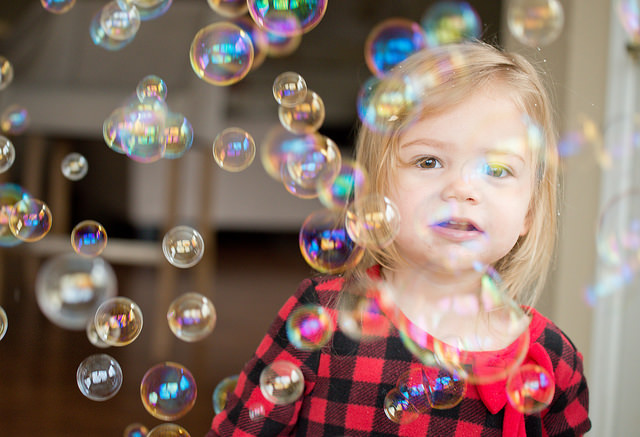
Photo Credit: Donnie Ray Jones
For more information: Photo Observations
Work Samples
These are collected from each individual child and include drawings, painting, cutting, writing etc. Accompanying work samples, you can add comments from the child, a description of what happened or what the child and said and link these to areas of development.
Example:
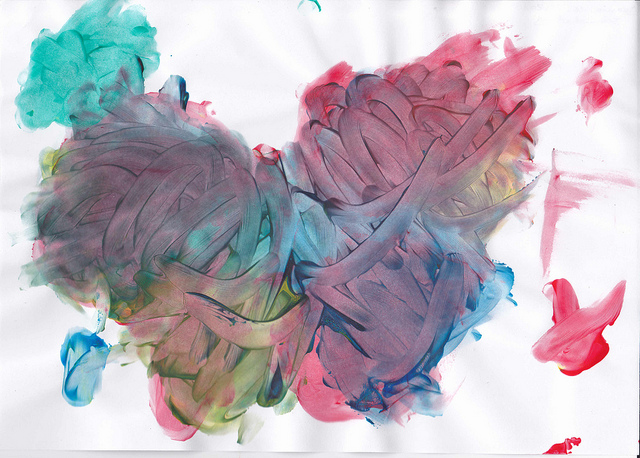
Photo Credit: bberlin2010
When choosing which observation method to use, it really depends on what you want to observe - jottings, sociographs, work samples can only provide basic information. Learning stories, anecdotal records, running records provide a more comprehensive understanding on what the child is learning.
For more information: Work Sample
On Aussie Childcare Network we have a range of observation templates available. Check them out here: Observation Templates
References:
Observing, Recording and Reporting Children's Development
Anecdotal Records - National Vet Content- 2012
Running Records - Infant and Toddlers - 2014


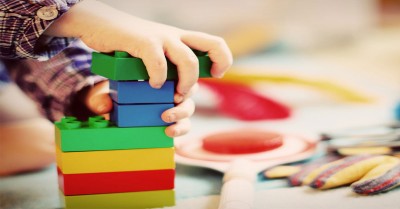


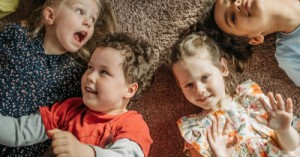

 Here is the list of the EYLF Learning Outcomes that you can use as a guide or reference for your documentation and planning. The EYLF
Here is the list of the EYLF Learning Outcomes that you can use as a guide or reference for your documentation and planning. The EYLF The EYLF is a guide which consists of Principles, Practices and 5 main Learning Outcomes along with each of their sub outcomes, based on identity,
The EYLF is a guide which consists of Principles, Practices and 5 main Learning Outcomes along with each of their sub outcomes, based on identity, This is a guide on How to Write a Learning Story. It provides information on What Is A Learning Story, Writing A Learning Story, Sample
This is a guide on How to Write a Learning Story. It provides information on What Is A Learning Story, Writing A Learning Story, Sample One of the most important types of documentation methods that educators needs to be familiar with are “observations”. Observations are crucial for all early childhood
One of the most important types of documentation methods that educators needs to be familiar with are “observations”. Observations are crucial for all early childhood To support children achieve learning outcomes from the EYLF Framework, the following list gives educators examples of how to promote children's learning in each individual
To support children achieve learning outcomes from the EYLF Framework, the following list gives educators examples of how to promote children's learning in each individual Reflective practice is learning from everyday situations and issues and concerns that arise which form part of our daily routine while working in an early
Reflective practice is learning from everyday situations and issues and concerns that arise which form part of our daily routine while working in an early Within Australia, Programming and Planning is reflected and supported by the Early Years Learning Framework. Educators within early childhood settings, use the EYLF to guide
Within Australia, Programming and Planning is reflected and supported by the Early Years Learning Framework. Educators within early childhood settings, use the EYLF to guide When observing children, it's important that we use a range of different observation methods from running records, learning stories to photographs and work samples. Using
When observing children, it's important that we use a range of different observation methods from running records, learning stories to photographs and work samples. Using This is a guide for educators on what to observe under each sub learning outcome from the EYLF Framework, when a child is engaged in
This is a guide for educators on what to observe under each sub learning outcome from the EYLF Framework, when a child is engaged in The Early Years Learning Framework describes the curriculum as “all the interactions, experiences, activities, routines and events, planned and unplanned, that occur in an environment
The Early Years Learning Framework describes the curriculum as “all the interactions, experiences, activities, routines and events, planned and unplanned, that occur in an environment
